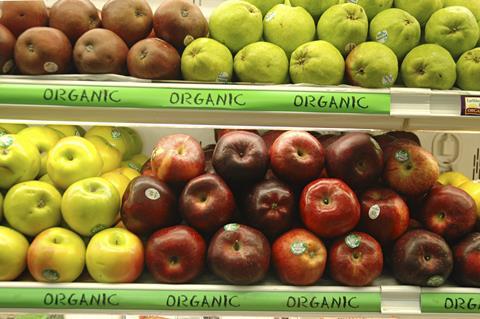
Amid all the uncertainty facing the fresh produce industry at the moment, it should not be forgotten that there are still significant reasons for optimism.
Demand for fruit and vegetables – at home, in restaurants and on the go – is on an upward trajectory, while manufacturers are looking to add healthier ingredients to everything from ready meals to cereals and soups.
Another massive growth area is organics, where a huge untapped opportunity lies in wait if the industry can seize the day and grab the bounties ahead.
I attended a Soil Association forum recently where it was proudly announced that sales of organics in the UK were on course to surpass their previous high of £2.1 billion this year on the back of strong 8.2 per cent growth. All well and good, but with organics still having less than a two per cent share of the grocery market in this country, I would argue that if anything we should be disappointed with such a low figure at a time when other nations are really grabbing the initiative.
Take comparable large markets like Germany and the USA – organic share in both countries is expected to hit seven to ten per cent this year, as it is in smaller markets like Denmark and Switzerland. Now that’s something to shout about.
So why are we lagging so far behind? It’s true that trends that hit the North American market can take a little while to filter through to our side of the pond, but all the signs are that it is well on the way to happening. All organic fresh produce is in strong growth here, with fruit up 16.9 per cent to £124m in the last year, veg up 6.8 per cent to £120m and salad rising 6.7 per cent to £88m.
There is an increasing ‘clean eating’ movement that is boosting support for organic, and with ever-reducing availability of chemicals for conventional production more growers may consider it worth the time and expense of converting. Certainly, that needs to happen if the sector is to achieve its potential – according to a report from Organic Monitor earlier this year, growth in organic farmland is slowing, leading to possible supply shortages (and inevitably, rising prices). It would be a real shame if lack of available land stood in the way of sector growth, but hopefully that favourable supply-demand ratio might be a further reason for farmers to consider making the switch.
Amazon’s proposed acquisition of Whole Foods Market shows that the biggest operators feel there’s real potential in the organic market, and the deal is likely to see more organic food sold online via the Amazon Fresh platform too.
There’s more that can be done on the marketing front. The Soil Association’s Organic September campaign has done great work to raise awareness, but I can’t help feeling we need a year-round initiative to really get the momentum going and start matching those figures seen in other western European nations. If any evidence were needed, one only need look at the phenomenal success of the soft-fruit category’s year-round Seasonal Berries campaign to see what the right marketing can do for sales figures.
There’s also a feeling that September isn’t the best time of year, for fruit and vegetable suppliers at least, and it would make more sense to be running promotions at a time of plentiful supply.
Lots to think about, therefore, but one thing is for sure – there are few categories with as much potential for growth than organics, and if suppliers, supermarkets, trade bodies and everyone else involved can get together and seize the day we could be seeing some pretty extraordinary growth figures over the coming years.



